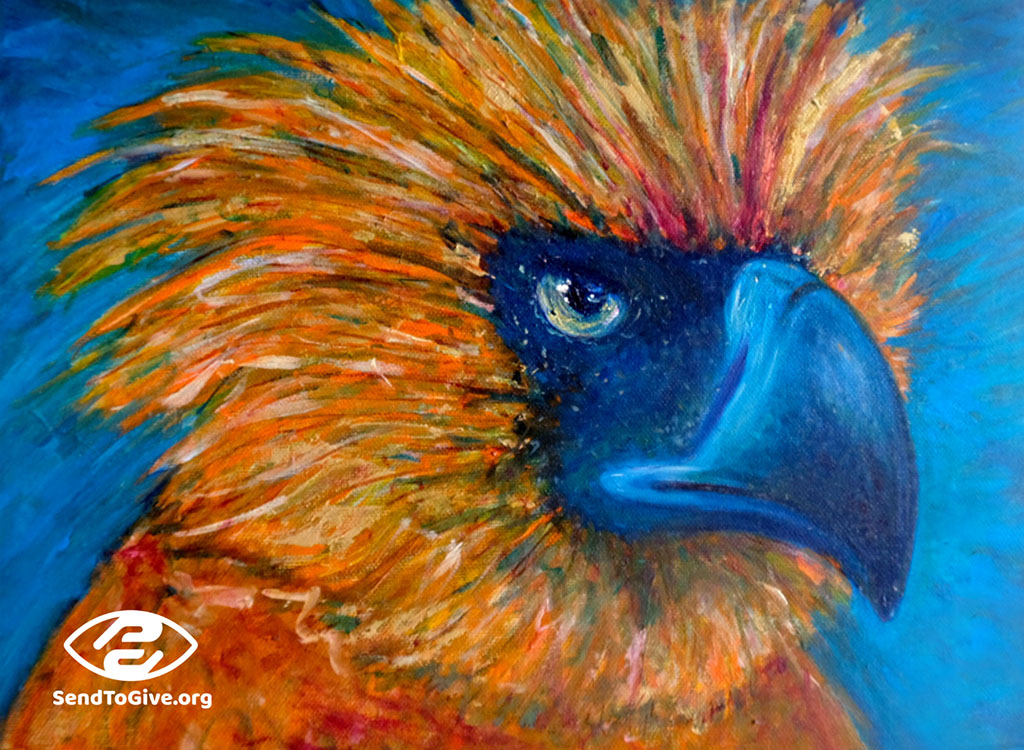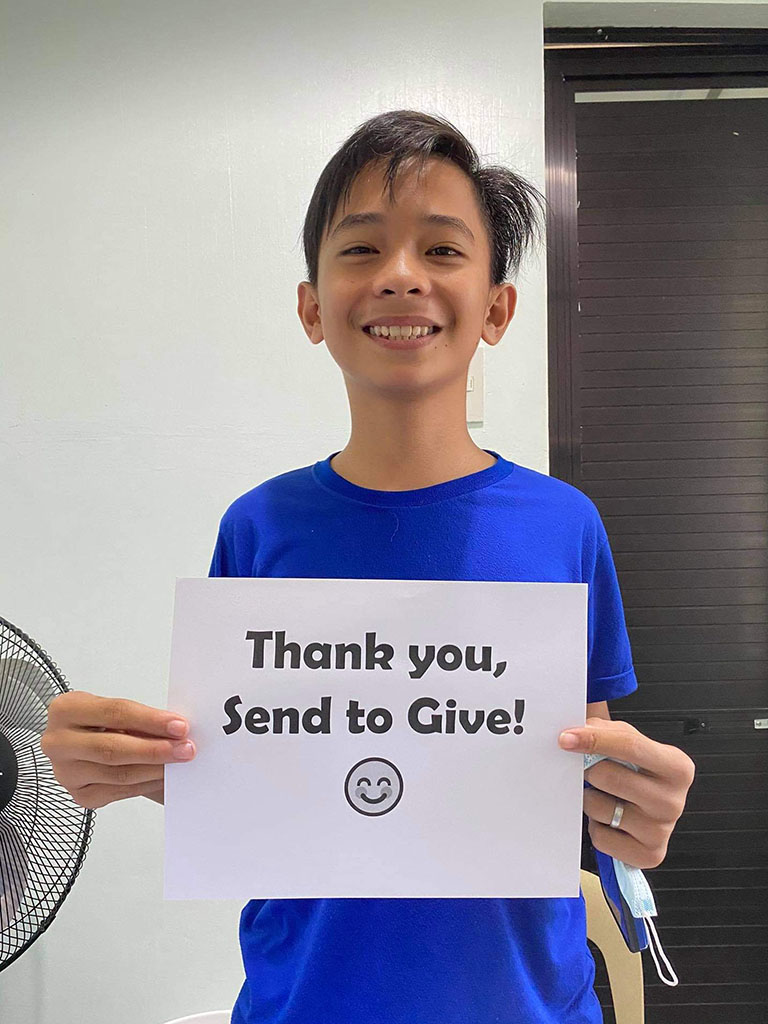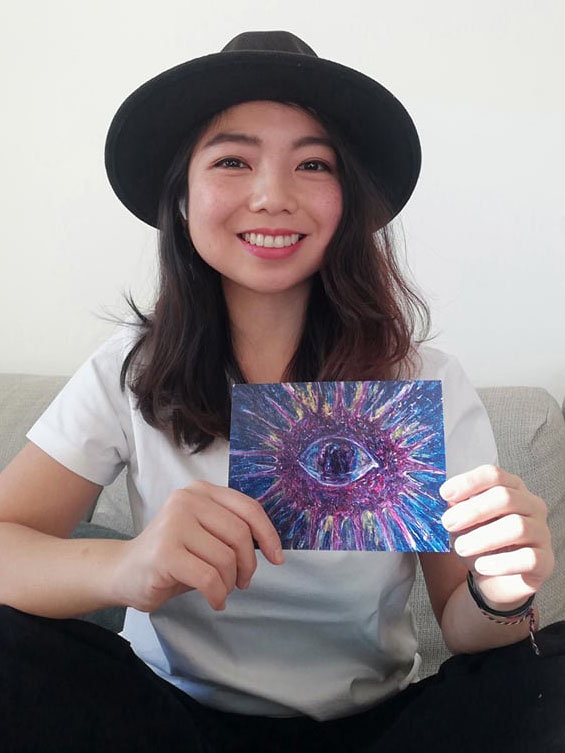Jo Bautista is an artist and social entrepreneur. In 2020, as Covid-19 disrupted our lives, she launched SendToGive, a social business that combines art and impact.
1. Hi Jo, first of all, can you tell us a bit about your personal and professional journey? How did the idea of SendToGive come to you?
I was born in the Philippines and came to Germany in September 2019 to pursue my master’s degree at ESCP. Six months into the programme, the Covid-19 crisis broke out. As I was quarantined here in Germany, I would constantly check the news about the Philippines, reading every day about the many ways the country was struggling during this time.
People were losing their jobs and going homeless on a day-to-day basis. That really freaked me out so, to cope with my negative emotions, I started painting every day. It occurred to me that, with a global pandemic in our midst, the best way to make the world better is if each individual person contributes.
My approach was through business. My first idea was to sell the paintings and to send the money back home. But I didn’t know how to sell them, especially because I couldn’t go out into the streets of Berlin. So I turned the paintings into postcards instead, and SendToGive was born.
2. How does SendToGive work exactly?
Through the SendToGive website, you can send a postcard to anybody without ever actually having to go to a post office: you can simply type out your message and send it online. All the profits from each postcard sent are used to support underserved farmers across four provinces in the Philippines.
SendToGive started in May 2020 with postcards but as we look on to our 2nd year and onwards, I want to move into securing and properly managing corporate donations.
Practically the entire 2021 has been spent on trying to secure the non-profit status here in Germany but this challenging step is also a very important one since it would enable us to work with corporations – that means bigger donations and greater impact.
The Philippines relies on an agricultural economy, but farmers are the poorest people of our population, which doesn’t make sense. So we’re trying to support them by giving them groceries, health insurance and scholarships for their children.
3. The opportunity to impact people’s lives for the better is very special. Have you managed to meet some of your beneficiaries?
Unfortunately, I haven’t been able to meet any of our beneficiaries because I haven’t been home since the pandemic started. We have exchanged letters, though, and sometimes they send me videos. The one beneficiary we have the closest engagement with is a kid we started helping when he was 12. SendToGive provides him with enough money to cover his costs for school, such as food and transportation. His name is Ken.
4. How do the roles of artist and entrepreneur relate? Has one helped you become better at the other?
I do think so. As an entrepreneur, I don’t follow specific stages or a very well-defined plan. I tend to follow my intuition through some sort of flow, the same way that I paint. I’m not very methodical, but then somehow, it forms a picture at the end. It’s a very nonlinear, creative process and this way of doing things, which I think I am able to develop in my art, also helps me on the entrepreneurial side.
Flipping it around, I think my entrepreneurial side helps give structure and discipline to my art, pushing me to create paintings and drawings that have more than just a visual appeal but some kind of force in the world.
As an entrepreneur and artist, I don’t follow specific stages, and I tend to follow my intuition through some sort of flow, the same way that I paint. I’m not very methodical, but then somehow it forms a picture at the end. It’s a very nonlinear, creative process.
5. Art and entrepreneurship are both a process, indeed. Going back to your business, what’s next on the horizon for SendToGive?
I want to provide families in the Philippines with solar lamps. About 4.7 million Filipinos live with no electricity. That’s more than the size of Cologne and Berlin combined, a whole population that lives in complete darkness at night.
These families get by using kerosene lamps, which are hazardous to their health, especially since they are constantly inhaling fuel. It’s also expensive, taking up between 10 to 30% of a family’s income per month. Their money literally goes up in smoke! It’s also really bad for the environment. Kerosene, when you burn it, emits something called black carbon, which is a lot more heat absorbent than regular carbon.
So we want to replace these kerosene lamps with solar lamps that are healthier, cheaper, and more environmentally friendly. One solar lamp can also last a family up to 6 years. In our next stage of growth, through collaborations with corporations, we hope to provide solar lamps to entire communities.
About 4.7 million Filipinos live with no electricity. That’s the size of Cologne and Berlin combined, a whole population that lives in complete darkness at night.
6. Earlier this year, you became a member of the ChangemakerXchange community co-created by Ashoka and Robert Bosch Stiftung. What does it mean to you to be considered a change maker?
I don’t think the word changemaker belongs to me just yet. I think I have the potential to be one, simply because I have the desire and the willingness to act. But the Changemakers I have in my mind are those that really create change in a big way and I am not there yet. But I am working towards it and I’m looking forward.
When I started, I wasn’t thinking so far ahead. I just knew I wanted to help people. And then I tried and I just didn’t stop. I’m still trying today.
7. What piece of advice would you give to young people eager to make a difference in the world?
Start with what you’re passionate about and have fun with it. Just try and don’t overthink it. I know that whenever I start thinking about the risks and all the work that is left to do, I get this weird feeling and start asking myself: is it worth it? But when I started, I wasn’t thinking so far ahead. I just knew I wanted to help people. And then I tried and I just didn’t stop. I’m still trying today.
Interested in collaborating, sharing ideas or giving feedback, you can reach Jo directly at: jo@sendtogive.org.
License and Republishing
The Choice - Republishing rules
We publish under a Creative Commons license with the following characteristics Attribution/Sharealike.
- You may not make any changes to the articles published on our site, except for dates, locations (according to the news, if necessary), and your editorial policy. The content must be reproduced and represented by the licensee as published by The Choice, without any cuts, additions, insertions, reductions, alterations or any other modifications.If changes are planned in the text, they must be made in agreement with the author before publication.
- Please make sure to cite the authors of the articles, ideally at the beginning of your republication.
- It is mandatory to cite The Choice and include a link to its homepage or the URL of thearticle. Insertion of The Choice’s logo is highly recommended.
- The sale of our articles in a separate way, in their entirety or in extracts, is not allowed , but you can publish them on pages including advertisements.
- Please request permission before republishing any of the images or pictures contained in our articles. Some of them are not available for republishing without authorization and payment. Please check the terms available in the image caption. However, it is possible to remove images or pictures used by The Choice or replace them with your own.
- Systematic and/or complete republication of the articles and content available on The Choice is prohibited.
- Republishing The Choice articles on a site whose access is entirely available by payment or by subscription is prohibited.
- For websites where access to digital content is restricted by a paywall, republication of The Choice articles, in their entirety, must be on the open access portion of those sites.
- The Choice reserves the right to enter into separate written agreements for the republication of its articles, under the non-exclusive Creative Commons licenses and with the permission of the authors. Please contact The Choice if you are interested at contact@the-choice.org.
Individual cases
Extracts: It is recommended that after republishing the first few lines or a paragraph of an article, you indicate "The entire article is available on ESCP’s media, The Choice" with a link to the article.
Citations: Citations of articles written by authors from The Choice should include a link to the URL of the authors’ article.
Translations: Translations may be considered modifications under The Choice's Creative Commons license, therefore these are not permitted without the approval of the article's author.
Modifications: Modifications are not permitted under the Creative Commons license of The Choice. However, authors may be contacted for authorization, prior to any publication, where a modification is planned. Without express consent, The Choice is not bound by any changes made to its content when republished.
Authorized connections / copyright assignment forms: Their use is not necessary as long as the republishing rules of this article are respected.
Print: The Choice articles can be republished according to the rules mentioned above, without the need to include the view counter and links in a printed version.
If you choose this option, please send an image of the republished article to The Choice team so that the author can review it.
Podcasts and videos: Videos and podcasts whose copyrights belong to The Choice are also under a Creative Commons license. Therefore, the same republishing rules apply to them.








